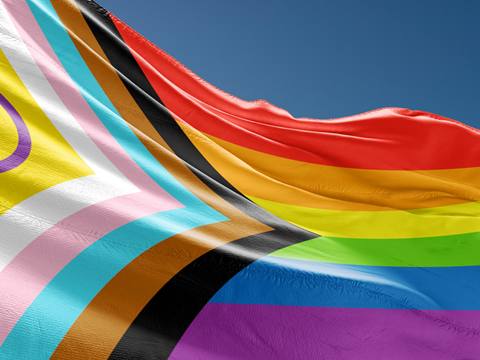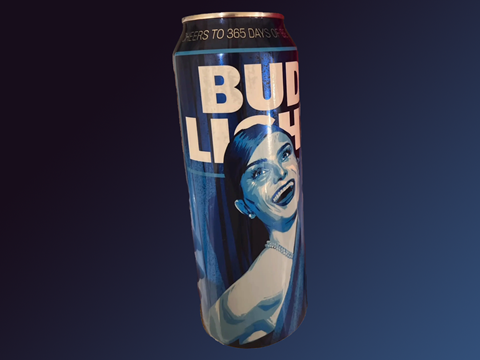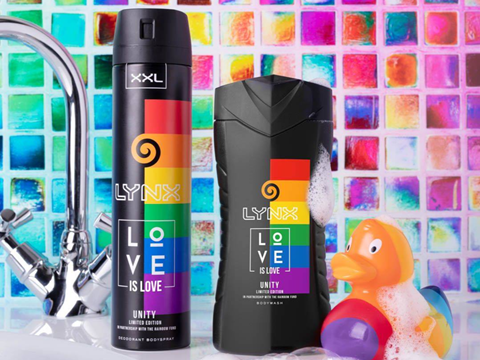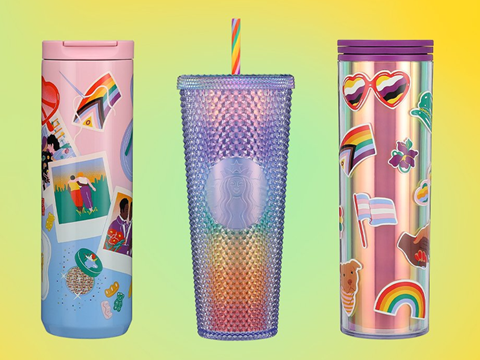
Consumers may notice a rise in LGBTQ+ themed packaging designs in June – coinciding with Pride Month, which commemorates the Stonewall riots for gay liberation in 1969. Some consider gestures like these a sign of support and a benchmark for increasing acceptance; others condemn it as companies exploiting a social movement for their own profit. Is there any way packaging can be used as a force for good? Emma Liggins weighs up the options.
Various terms exist to describe the phenomenon – rainbow-washing, pinkwashing, corporate pride, rainbow capitalism – but it is a similar concept to ‘greenwashing’ in conversations about sustainability. Organizations or corporations that ‘rainbow-wash’ use branding associated with the LGBTQ+ community (e.g. pride flags) to market themselves as socially progressive, yet fail to back it up with meaningful action.
“By the time Pride month rolls around, the corporate world explodes in a colourful carnival of pro-LGBTQ+ advertisements, campaigns and rebrandings,” Fair Planet explains in ‘Genuine Pride or Corporate Rainbow Washing?’ “What was once a civil rights protest and riot to demand equal rights has therefore become part of the corporate pipeline.
“Put simply, rainbow-washing is the practice of using rainbow-themed symbolism in branding, advertising, merchandise or social media, ostensibly in solidarity with LGBTQ+ people during pride month, but without active support of LGBTQ+ people’s identities or rights.”
On the surface, incorporating Pride imagery into a box, bottle, or can might seem harmless, even benign. Pride celebrations themselves are designed to bring visibility to underrepresented communities; extending the sentiment to packaging and other everyday objects arguably helps normalize LGBTQ+ identities. Fair Planet adds that “Pride provides companies with the opportunity to make their values clear, show support for their LGBTQ+ employees and, in the best cases, use their platforms to demand social change.”
Even so, the value of Pride-themed packaging by itself should not be overstated. It may incentivize pro-LGBTQ+ consumers to spend their money – and studies have revealed that aligning with LGBTQ+ causes increases a company’s profit and stock market valuation – but it makes no difference to the cause once the product leaves a supermarket shelf. In an article written for Penn Today, Cait Lamberton, a professor of marketing at the University of Pennsylvania’s Wharton School, questions the usefulness of a rainbow-printed label once the pack is put in storage.
“On one hand, support feels much better than silence,” Lamberton says. “Those of us who grew up in decades where the LGBTQ+ community’s needs were met with either indifference or intolerance instinctively appreciate the rainbows.
“But [companies are] free to do this now in part because societal norms have changed. It’s hard to give a company credit for following instead of leading. Many are following. That doesn’t mean they aren’t sincere, but in itself, this is a very weak signal of commitment.”
Perceived insincerity can sometimes damage a company’s reputation more than outright silence. Last year, Bud Light partnered with transgender social media influencer Dylan Mulvaney, sending her a personalized beer can decorated with her likeness. When anti-LGBTQ+ consumers left Mulvaney abusive messages and threatened to boycott the drink, Brendan Whitworth, CEO of parent company Anheuser-Busch, stated that Bud Light “never intended to be part of a discussion that divides people” – for which he was accused of “kicking Mulvaney to the curb” with a “tepid” response.

Critics went on to point out the Stonewall Inn’s refusal to serve Bud Light during Pride celebrations two years prior due to allegations that Anheuser-Busch donated over $35,000 to “anti-LGTBQ+” legislators between 2015 and 2020. Contradictions like these are easier to spot in the digital age and influence strong opinions among consumers, who are increasingly basing their spending decisions on a company’s social and political leanings (or lack thereof).
Indeed, Lamberton warns that companies trying to “hedge their bets” this way “may turn out to be the riskiest move of all”, as it gambles with brand loyalty. “Elected officials may not be around forever,” she says, “but consumer sentiment, and employee morale, can affect you for a very long time.”
If a company chooses to take a pro-LGBTQ+ stance, they are expected to go beyond aesthetics and prove their authenticity. A 2022 survey revealed LGBTQ+ respondents’ general ambivalence towards companies utilizing LGBTQ+ imagery or sponsoring a local Pride event. Instead, 87% considered a company’s open support for equality legislation the strongest display of solidarity. This was followed by active support for LGBTQ+ employees (82%), speaking out against discrimination (82%), contributing to programmes for LGBTQ+ youth (77%), and donating money to non-profits (67%).

Unilever took steps in the right direction in 2019. Its Lynx, Impulse, Radox, Vaseline, V05, and other personal care brands became available in new packaging designs to commemorate the 50th anniversary of the Stonewall riots. Each pack was developed in partnership with The Brighton Rainbow Fund, which dedicates itself to local LGBTQ+ and HIV/AIDS organizations; and, rather than limiting its run to Pride Month, the packaging was available all year.
“As an active member of the LGBT+ communities, I was only too aware of the pitfalls of a project like this,” Chris Bradley, United Studio co-founder and leader of the Radox campaign, told GScene at the time. “I am delighted that the direct beneficiary of this project is a Brighton-based charity with a proven track record of helping the LGBT+ communities.
“As for designing the pack – that’s the easy bit. With our community under attack like it has never been in recent history, we thought it right to remember some of our core values.”
Unilever went on to sign the Declaration of Amsterdam for LGTBQ+ inclusion and involve itself in the Open for Business coalition, implying further dedication to supporting and uplifting its LGBTQ+ employees beyond the rollout of limited-edition packaging.

Infamously, Marks & Spencer released its Lettuce, Guacamole, Bacon and Tomato (LGBT) sandwich in the same year. Although the retailer simultaneously donated £10,000 to the LBGTQ+ youth homelessness charity AKT and a further €1,000 to the LGBTQ+ youth organization BeLong, this was not clear from the packaging, and profits from the sandwiches did not contribute to the charities. As such, the product went viral, treated by LGBTQ+ consumers as comedic at best and demeaning at worst.

Other rainbow-washing allegations are more insidious. In North America, Starbucks has just collaborated with LGBTQ+ artist Sofie Birkin to sell hot and cold tumblers depicting a Pride march and various pride flags. However, while the company highlights its work with the World Professional Association for Transgender Health (WPATH) to create a more inclusive medical policy, some transgender employees have accused Starbucks of reducing their hours in response to their involvement in a workers’ union, leaving them unable to qualify for health insurance and undertake gender-affirming surgery. Others report that their transgender benefit plan has been changed, forcing them to pay out of pocket and lose access to healthcare providers.
In cases like these, Pride-themed packaging can make a company look inauthentic, out of touch, hypocritical, or even exploitative, regardless of intent. Printing rainbow flags and empowering slogans onto a pack is no longer enough – but, as we’ve seen, companies can suffer when they are unclear or deceitful about their approach.
It is important to remember that the LGBTQ+ community is large and diverse. Opinions will differ about the ‘right way’ to engage with Pride Month; some people do not believe corporations have any place in the matter and will not be swayed by advertisements or graphic design. Nevertheless, companies have more money, outreach, and influence than most individuals, and packaging can become a useful tool in educating consumers, raising funds, and making a positive difference.
In no particular order, the consensus among online publications is as follows:
-
Commitment – Brands should engage with Pride to support the LGBTQ+ community, not for their own financial or reputational gain. Limited-edition packaging redesigns should directly benefit an organization that serves LGBTQ+ individuals, like a charity or non-profit, and efforts to support the community should continue once the campaign is over.
-
Consistency – Companies with a genuine interest in supporting the community should go beyond a Pride Month marketing campaign and commit to making progress all year round, whether or not a packaging redesign is involved. Their approach should not change in the face of anti-LGBTQ+ backlash, including threats to boycott products.
-
Accountability – A rainbow flag on a label does nothing to fix bigotry or underrepresentation in the workplace. To avoid ‘rainbow-washing’, companies should take action to protect LGBTQ+ employees, ensure their presence and mobility within the company, meet their individual needs (e.g. equivalent benefits for same-sex partnerships as heterosexual marriages), and never fund organizations that compromise the rights of the LGBTQ+ community.
-
Inclusion – LGBTQ+ employees and collaborators should always be involved in Pride-related packaging design and marketing campaigns. This ensures that LGBTQ+ community members profit from their work while reducing the likelihood of insensitive/offensive ideas reaching the market and damaging a brand’s reputation.
-
Transparency – Steps taken to support the LGBTQ+ community should be made clear; for instance, it should be obvious on-pack when and how the money raised from a product will benefit a pro-LGBTQ+ cause. Consumers should never be misled in these matters. If a campaign receives criticism from LGBTQ+ consumers, this should be listened to, openly acknowledged, and acted upon.
To summarize, then, a company seeking to participate in Pride Month sincerely should treat packaging as a vessel to spread awareness for, and boost engagement in, efforts to uplift the LGBTQ+ community. It should not be the extent of a company’s support, nor should it be limited to four weeks of opportunistic marketing or meeting consumer demand. Only with the extra work to make real change does a rainbow on a pack become more than a one-off PR stunt.
If you liked this story, you might also enjoy:
How are the top brands progressing on packaging sustainability?
The ultimate guide to global plastic sustainability regulation












No comments yet